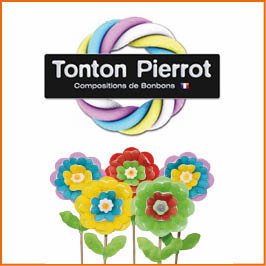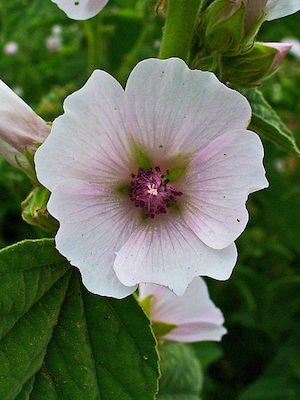Top French Marshmallow Confections for All Holidays

Just in time for St. Valentine’s Day and to help forget the winter doldrums come whimsical, light, nursery-tale colorful French marshmallow confections. An international affair, the candy is of France design, made in Bulgaria and distributed by an independent Belgian candy manufacturer, the family-owned and operated, Ameel Candy World.

Tonton Pirrot is the brand of the whimsical brochettes above. We found these marshmallow skewers in a candy shop in Los Angeles and bought all they had for my houseguest cat to present as gifts from my houseguest cat whose nickname is “marshmallow.” The skewers retail for $10. We tried to find out the wholesale cost but wholesale pricing process is so complicated because buyer pays all fluctuating taxes, transportation and import fees, that the answer was never sure.

The company is under the direction of Tom Ameel, son of founder Wilfried. As a wholesaler, they specialize in B2B commerce and delivery only of candy, sweets and drink products. The key to success in this case is that they alone offer these French treats. (And they also offer macaron.)

On a daily basis, thousands of customers in all of Flanders, Brussels, Wallonia and France, until far beyond Paris consume their goods. Another series of batches is exported around the world.
Despite the spiffy, very boutique look of their candies, customers can be found in all types of sales channels : from vending operators, over bakeries, convenience stores, gas stations, chocolate houses, drink markets and wholesalers, border shops, institutes, grocery stores and market vendors, night shops, advertising agencies, delis and associations, video stores and even hospitals.
The history of the marshmallow is as intriguing as its spongy texture (corn starch coated for that silky feeling).

The word “marshmallow” stems from the mallow plan, Althaea officinalis, which grows in marshes and is native to certain areas of Europe, North Africa, and Asia. The plant (shown above) has a fleshy stem, leaves, and a five-petalled white flower.
Marshmallow history is not exact but does date back to 2000 BC, where privileged Egyptians in ancient Egypt were described as eating them. There it was strictly reserved for gods and royalty, who took the root of the plant and used it as a medicinal to sooth coughs and sore throats, and heal wounds.
The first marshmallows were prepared by boiling pieces of root pulp with sugar until it thickened. Once thickened, the mixture was strained, cooled.
In the early to mid-1800’s, the marshmallow had made its way to France where confectioners united the plant’s medicinal purposes with indulgent ingredients utilized by the Egyptians.
Whether used for candy or medicinal purposes, the manufacturing process was limited to a small scale because it was so labor intensive. Small candy store owners would whip the sap from the mallow root into a fluffy candy mold. using sugar, water and egg whites.
This candy was called Pâté de Guimauve. The spongy-soft dessert made from whipping dried marshmallow roots with sugar, water, and egg whites was still considered medicinal. It was sold in bar form as a lozenge.
Small shop Confectioners in early 19th century France pioneered the innovation of whipping up the marshmallow sap and sweetening it, to make a confection similar to modern marshmallow. After the advance of the two-day marshmallow drying system became more steam-lined in the late 1800’s with a starch mogul system, production method improvement came more rapidly.
By the early 20th century, and the popular marshmallows were ready for mass consumption. Penny candies, food recipes were sold in tins as penny candy, and began to be seen in a number of food recipes, tutti frutti.
In the United States, the United Kingdom, North America, New Zealand and Australia, roasting or toasting of marshmallows over open flame, preferably outdoor, became enormously popular. Done properly, this produces a caramelized outer skin with a liquid, molten layer underneath.
In 1948, Greek-American confectioner, Alex Doumak, revolutionized the manufacturing process with an extrusion prosess involving tubes. And by mid-century, automated systems made it possible to produce thousands of pounds of marshmallow a day.
Still, today, the marshmallow consists of the same four components: sugar, water, air, and a whipping agent (usually a protein) though each brand of has its own specific formula for how to produce the ‘perfect’ marshmallow. While far behind in chocolate consumption, it remains a very special (and low-calorie, healthy) treat all over the world.


 Gerry Furth-Sides
Gerry Furth-Sides  Barbara Hansen
Barbara Hansen  Chef-owner Alain Cohen
Chef-owner Alain Cohen  Roberta Deen
Roberta Deen  Jose Martinez
Jose Martinez  Nivedita Basu
Nivedita Basu